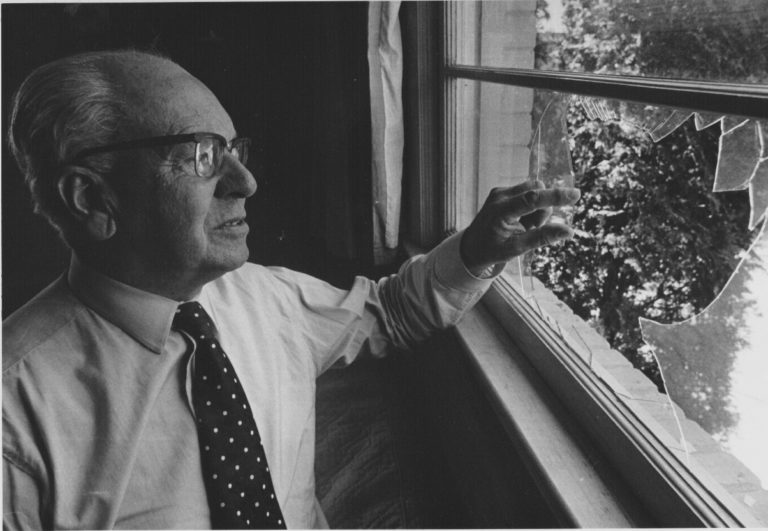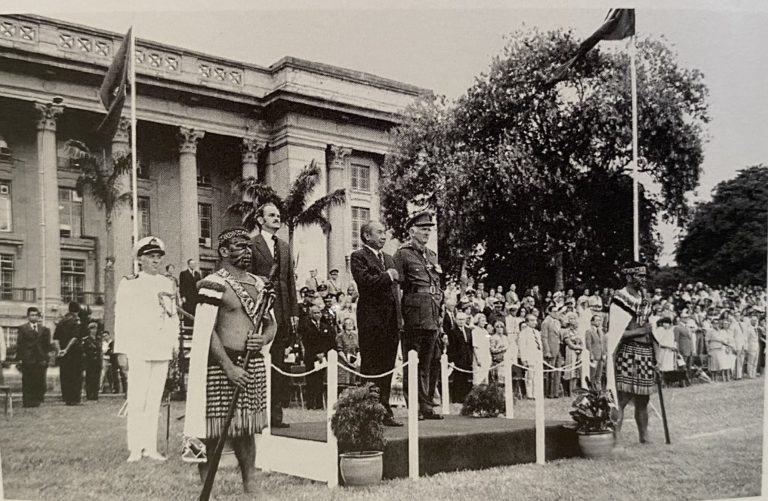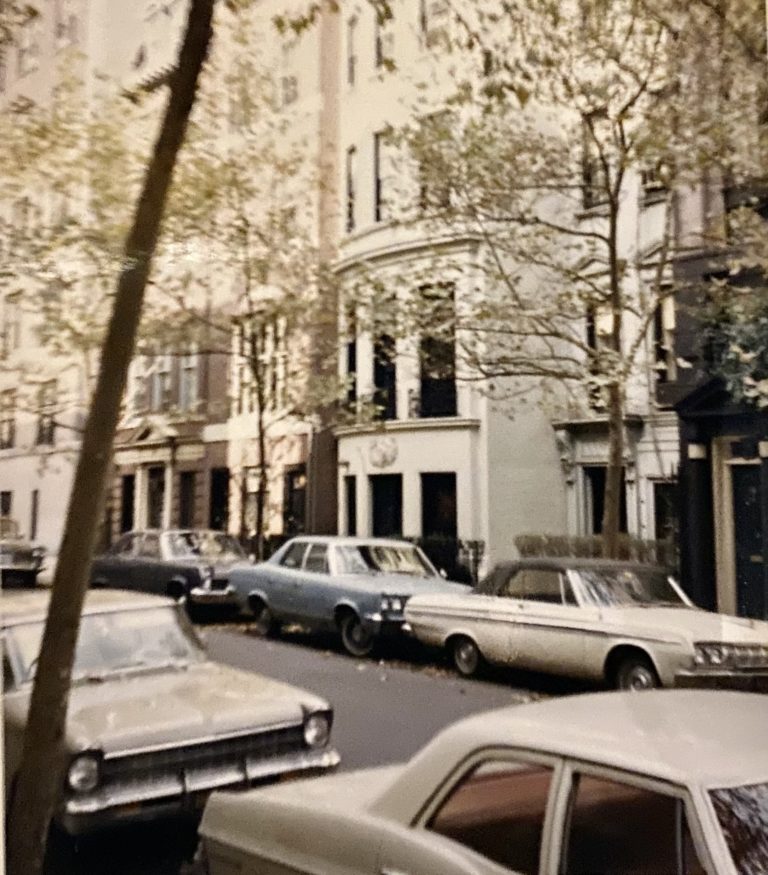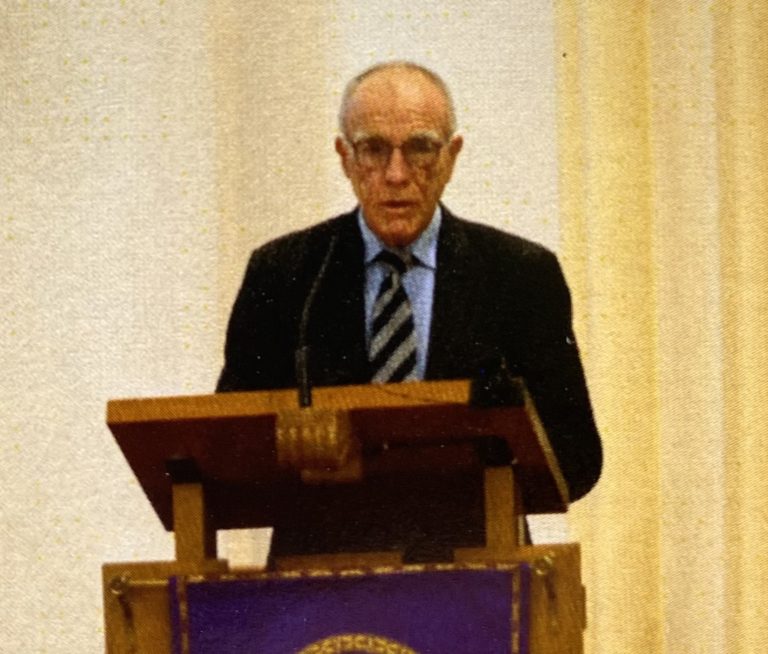Kahu Vineyard
Throughout my working life I had been interested in wine, particularly since diplomatic life meant the consumption of a considerable amount of it. My only experience of the production side came from two issues which cropped up during my time in the Prime Minister’s Department. In 1982 our wine industry was very backward. Plantings heavily favoured the German muller-thurgau variety or other even less attractive varieties such as golden chasselas used for sweet white wines and cheap sherry. The Prime Minister, Sir Robert Muldoon, was interested in wine and so as his Advisory Group we did a study to discover what was wrong and what could be done to improve it.
The answer inevitably was some degree of government intervention. We proposed that a replanting subsidy be given to all vineyard owners who pulled their inferior vines and replanted with any of the classic varieties, such as chardonnay or pinot noir. It was a once-only payment designed to make it economically possible for those already in the business to upgrade their vines and prosper. Such a handout was understandably criticised but it worked, the only example of a successful government subsidy that I can recollect in my years of government. Pioneers of good wine were already experimenting with the best varieties but the subsidy brought the mass of growers behind them and muller-thurgau and golden chasselas disappeared from the shelves.
In their place came the beginnings of a serious wine industry and we were faced with a new problem. New Zealand and Australia had been negotiating for some years with the aim of a comprehensive free trade agreement. As the end approached wine emerged as an obstacle. New Zealand growers were convinced that their new industry could not compete with the larger and long-established Australian production. And where we had had the Prime Minister on our side over the subsidy, he was close to the growers and decidedly cool about removing the protection they enjoyed. We argued that the basic aim of the agreement was that no item could be permanently excluded from ultimate free trade, though some had already been given an extended timetable to allow adjustment before full participation. We suggested a ten-year grace period for wine. Each year the tariff would diminish a little and disappear completely at the end of ten years. That was accepted by the government and the industry, mainly for the psychological reason that people can agree more easily if a difficulty is pushed into the future. But it worked, because the industry’s confidence grew faster than the tariff diminished and the growers were comfortable about moving to full free trade some years before the ten year deadline was reached.
These were by no means problems that preoccupied the Advisory Group, though they could be numbered among our much fewer successes. The Friday evening ritual of going through the Cabinet papers to see if any required a briefing for the Prime Minister before the following Monday meeting came to be occasionally improved by a wine tasting where everyone in the Advisory Group brought a bottle of wine and we made blind comparisons which were more interesting than devising wine policies. It led, in me at least, to the start of some curiosity about how wine was grown and made.
This was heightened by an invitation from Somerford and Leonie Teagle to join them at their new house for the second Toast Martinborough festival in November 1993. I liked Martinborough, which I had never visited before, but the decisive moment came in the following Christmas when a study of the Michael Cooper wine survey that my daughter Sophie gave me made it clear that Martinborough was one of the best and also the most convenient site for a vineyard if I wanted to establish one. For six months I looked for a suitable piece of bare land. It was not an especially focused search – I was fully engrossed in being Secretary of Defence at the time – but it did not yield as much as an empty paddock for sale.
Then in early July 1994 I saw an advertisement in the Wellington paper for a five-acre vineyard on Huangarua Road. I did not greatly want an established vineyard – it was planted in cabernet sauvignon and gewürztraminer – but it was on the favoured river terrace land and nothing else had appeared. On a Sunday morning Julie and I made a second visit to Martinborough to look at it. It was owned by Chris Lintz whose family had made wine in Germany since at least Napoleon’s time. In building a winery in Martinborough he had over-extended and decided to sell this block.
I walked through the vines with him, gathering information about the varieties and age of the plantings. The cabernet had been planted before Chris’s time, in 1988/89 and the gewurz variety was the less attractive red traminer. As we walked back I made notes on the more expert advice to be sought on the price he was asking ($135,000), whether this was a worthwhile purchase and what needed to be done to improve it. We reached the road to see that a Mercedes had drawn up on the grass and was disgorging its passengers while an Audi was about to park behind it. A quick decision was needed. I abandoned my list of pre-sale enquiries and said to Chris, “I’ll take it”.
As the new owner I still had to work out what to do with it. I talked to one or two more knowledgeable people including Michael Cooper who urged me to pull out all the vines and plant pinot gris, “the wine of the future”. He was right to the extent that the pinot gris planted in Lismore at the back of our property has done very well, but I prefer red wine and do not greatly enjoy the strongly aromatic nature of Martinborough pinot gris. It was my introduction to the urge for fashionable varieties which have periodically swept through the New Zealand wine scene. Instead I concluded a temporary agreement with Chris Lintz to continue making wine from what was already there.
There were disadvantages. The red gewurz was a shy bearer (a quarter of a ton to the acre instead of the two tons regarded as desirable) and its wine was not especially pleasing. In 1997 I had it all pulled out and replaced with riesling. That grape, glorious in Germany, has not yet delivered its potential in New Zealand but has the virtue of being outstandingly reliable – year after year with little regard to the seasonal changes it delivers the same full load of firm bunches.
What to do with the cabernet was more difficult. It was the first planting that was fashionable as New Zealanders tried to find out what would work best. The Kahu planting was one of the most southerly and on the borderline of the seasonal temperature that would ripen it. I calculated that global warming was my friend here and that the borderline would gradually move south over the years. Instead, global warning went into a ten-year decline around the turn of the century and the average temperature actually dropped for most of those years. It became increasingly hard to get the grapes properly ripe. The picking time pushed further into May every year and even then only the occasional drought year produced the desirable ripeness. The year 1998 was hot and very dry and produced a stunner of a cabernet, still worth drinking twenty-two years later.
I could not wait for the periodic exceptional year. The issue then became what variety of red, other than pinot noir which I was not especially fond of, would do well in Martinborough. I had ended my contract with Lintz in 1999 and made a new one with Ata Rangi who were glad to have the cabernet for their Celebre blend. I thought about syrah, the grape of the southern Rhone Valley, having tasted an excellent bottle some years earlier which had been grown in the vineyard behind mine. I consulted Clive Paton who said it would be a gamble but worth the risk.
So that year all the cabernet vines were top-grafted with syrah. It was not entirely successful, there was about an 80% take and with hindsight it might have been better to pull all the vines and replant. But the gamble worked. The first hesitant production went into the Celebre blend but in 2013 there were enough grapes for a pure syrah. In April that year Julie was dying as her son and grandchildren helped pick and sort the bunches outside her window. The result was exciting and it was picked by the British Decanter magazine as one of New Zealand’s three best syrahs. In her memory Ata Rangi called the single-vineyard wine ‘Juliet’ and keep the name to use with exceptional Kahu syrahs, such as 2015 and 2016.
The syrah gamble is becoming established as a new orthodoxy. The rise in global temperatures has resumed and there have been increased plantings in Martinborough. Indeed, I now receive occasional and quite unmerited praise for my foresight in trying syrah as others can see the day when it will be too hot in Martinborough to grow first-class pinot noir.
The riesling was also unexpectedly lucky. When they took over management of the vineyard Ata Rangi was not much interested in the vines since they did not make a riesling. Some of the first crops they even made into verjus. In 2003 by chance the grapes caught a full dose of botrytis and the diminished quantity of intensely sweet juice was made into a dessert wine or ‘sticky’ as New Zealanders like to say. To everyone’s surprise in the following year it was named joint ‘Wine of the Year’ with a viognier from Hawkes Bay. That settled it; though I do not look forward to a dessert wine we were stuck with it and the riesling has made a dessert wine every year since and quickly sells out in the small amount that the vineyard makes.
Since then the vineyard has been in maintenance mode. The top sections of the nine rows outside the cottage were pulled out in 2019 to allow the tractor to turn more comfortably, and there are occasional planting to fill the gaps that appear from time to time in the syrah blocks. Otherwise things have settled into stasis, though I still cherish the dream of losing the riesling to replant with more syrah: the Juliet’s success as a single-vineyard wine has rather emphasised the vineyard’s small size. On the other hand this has relieved me from the capital and other burdens of managing a large enterprise.
A vineyard of this size is more of a hobby than a risk. Lee Kuan Yew was concerned when I bought the property, fearing that I had sunk my retirement savings into an uncertain future. What if the Japanese, he said, develop a powder which when water is added will produce an excellent wine? My reply was that since in eighty years no-one had succeeded in making a powder that produced drinkable tea I was relaxed about the danger to wine.
It took five or so years until the vineyard turned a modest cash profit but this was overshadowed by its capital appreciation and other financial advantages. Julie and I established the Hensley Vineyard Partnership which enjoyed unexpected success. Each year the partnership met to scrutinise the accounts and then adjourn for a celebratory lunch. The partnership is reduced to one member now and the celebrations have gone but the financial result is still being delivered.





